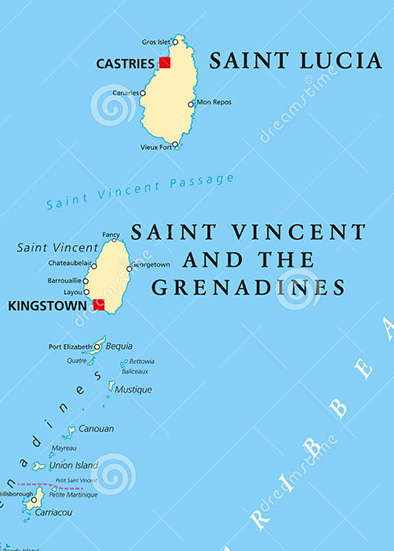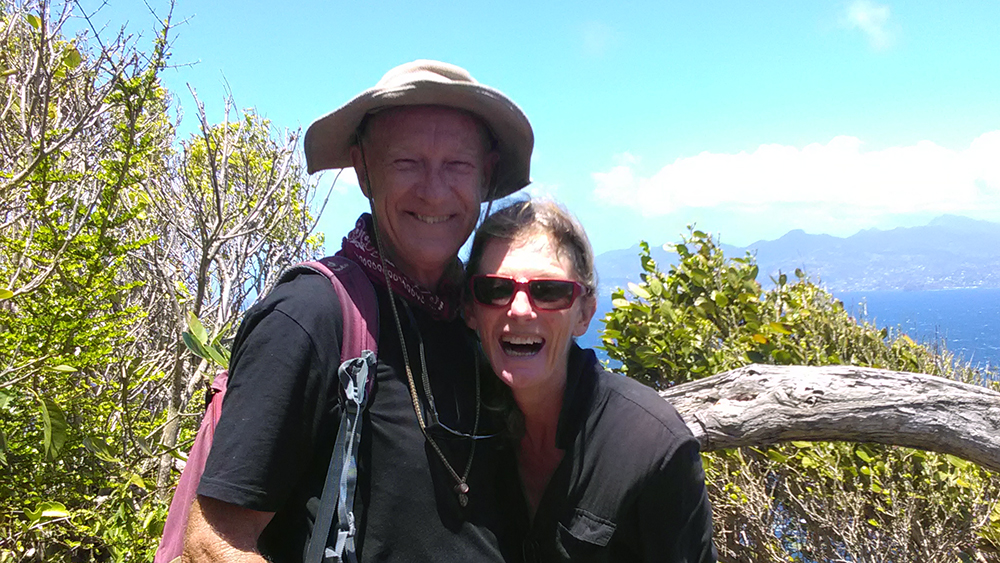
December to May is the main sailing season in the Caribbean and early in the season the trade winds tend to blow from ENE making it a tight beat when sailing northwards through the Windward Islands. Currents in the passages between the islands usually set to the northwest and need to be compensated for by heading further east making the beat even tougher.
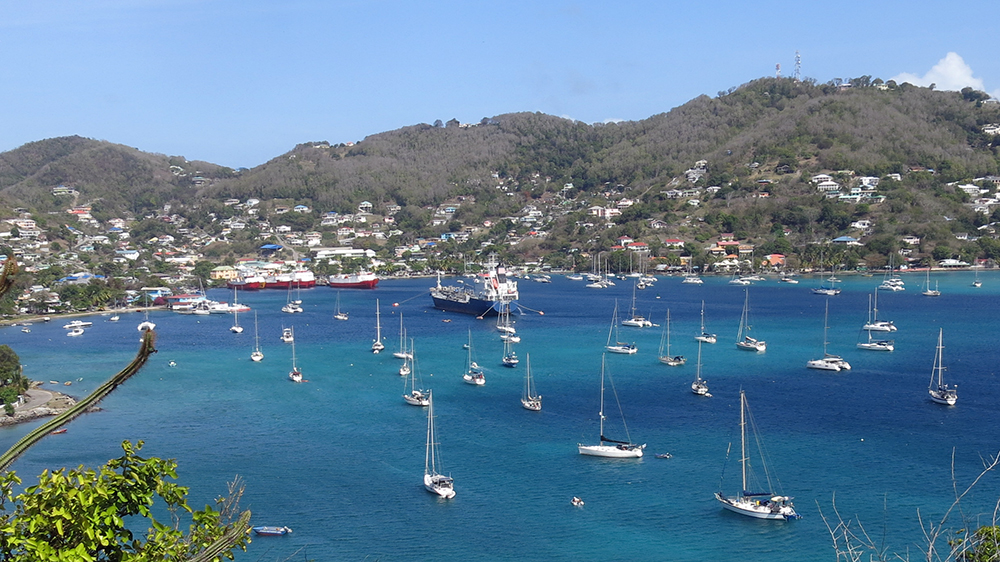
Bequia lies to the NNE of Mayreau but we had to set course for the more easterly island of Mustique to account for the drift (map below). The passage was boisterous with choppy seas, contrary currents and the wind almost on the nose. We motorsailed on a very tight starboard tack, more motoring than sailing most of the time, and were very glad to drop anchor in Admiralty Bay and recover with a stiff gin and tonic.
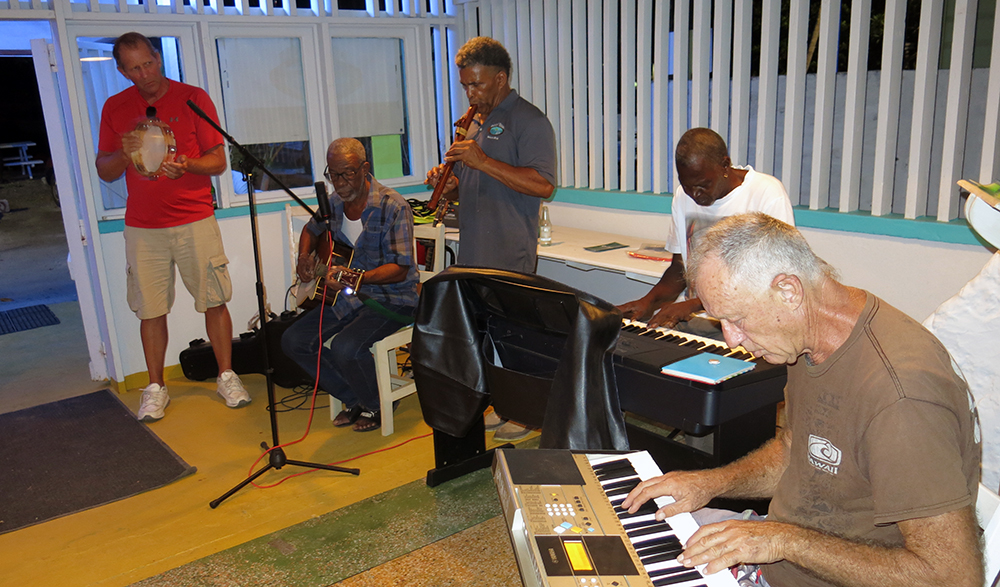
Bequia is a small island in the Northern Grenadines close to St. Vincent, and the large sheltered bay on the west coast is very popular with cruising yachts. With the brightly coloured clapboard houses, lush vegetation and laid back lifestyle give the island has a very Caribbean feel. Walking along the small road through town everyone greats you as you pass, sometimes even stopping you for a chat. Stalls selling fruit, carvings and crocheted Rasta hats line the street and small cafes entice you with baguettes, pizza or more exotic fare.
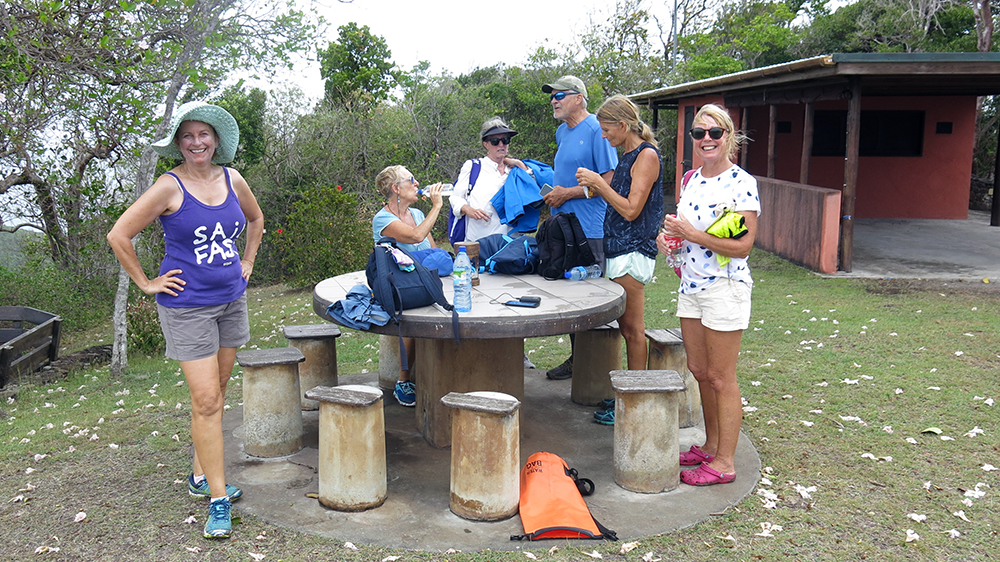
The cruisers have a VHF radio net in the mornings which is good for getting information about services, activities and social gatherings that are going on. I joined in with a noodling group (a kind of acquatic aerobics) and ran into some friends from Grenada; Jan and Pete on 2020, AnneMarie and Steve on Freebooter and Louise and Joseph on Tangaroa II who were also anchored in the bay.
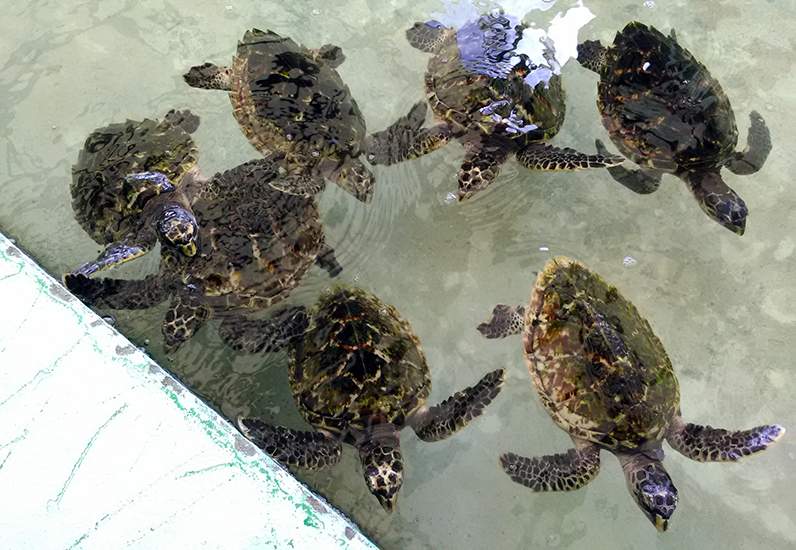
We had previously been together hiking in Cariacou so we organised a couple of walks, one to Bequia Head at the very northern tip of the island. The road took us past the Old Hegg turtle sanctuary where a local skin-diving fisherman tries to protect mother turtles and eggs from poachers. He rears hatchlings for three years and then releases them into the ocean. Old Hegg is a twenty three year old hawksbill turtle with a deformed shell that lives at the sanctuary.
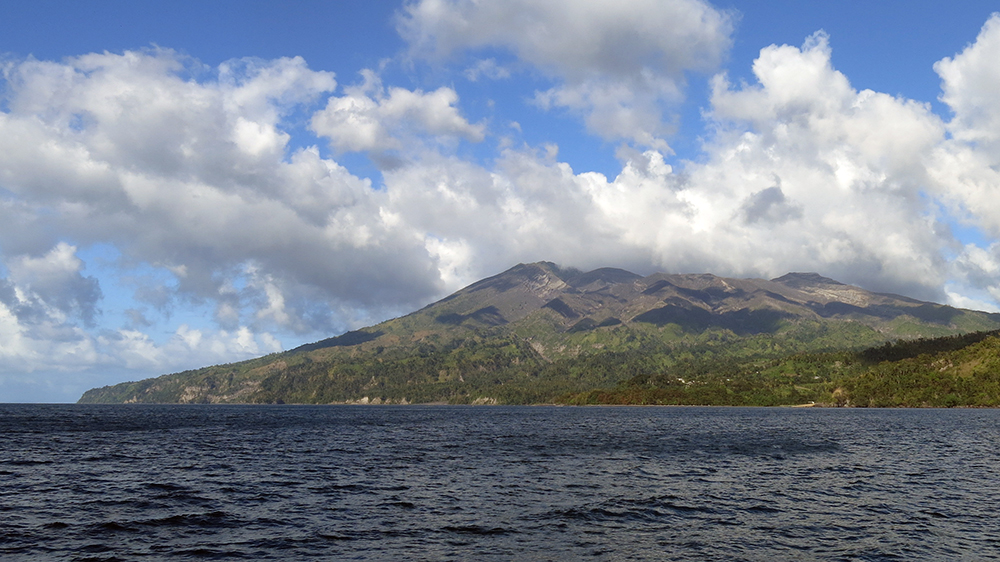
We stayed in Bequia for a couple of weeks until after the spring equinox in mid March when the winds begin to veer, becoming more easterly and making sailing northwards much easier. En route for St. Lucia we stopped at Chateaubelair, a small fishing community on the west coast of St. Vincent. The village which lies at the foot of Mount Soufriere was the centre for evacuation when the volcano errupted quite dramatically last year. Local people were rehoused in the southern part of the island for several months before they were allowed back to their homes.
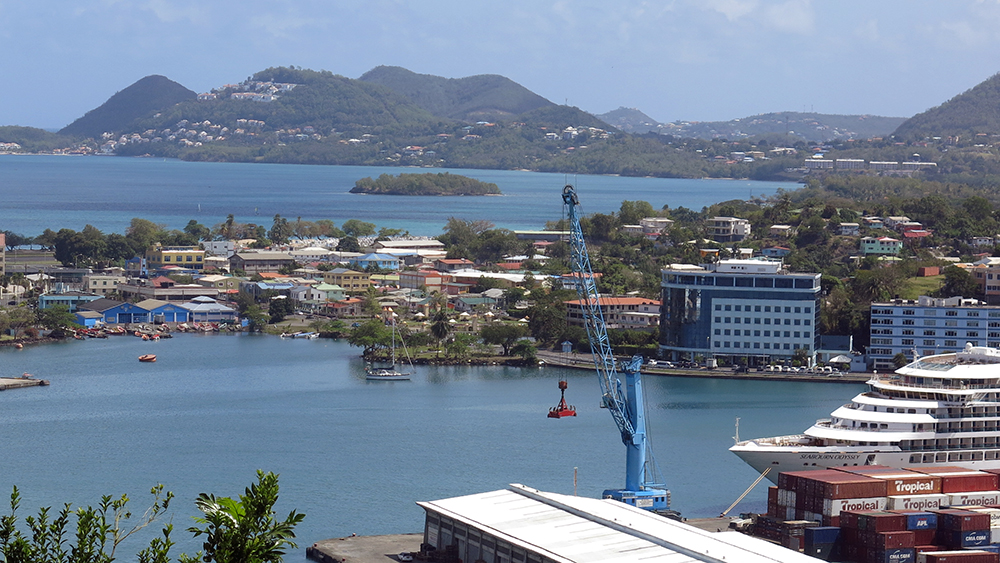
The sail to St. Lucia was a glorious; a comfortable starboard tack with the mainsail and gib filled and Distant Drummer pushing through a light swell. The wind dropped in the lee of the island and we motorsailed up to Castries, the main town in St. Lucia. The harbour caters for cargo ships and can accommodate three cruise liners but is not set up for private yachts. The Customs and Immigration staff grudgingly checked us in and we anchored outside Vigie Cove. The next morning the police moved us on but allowed us to anchor right downtown, we were the only yacht there.
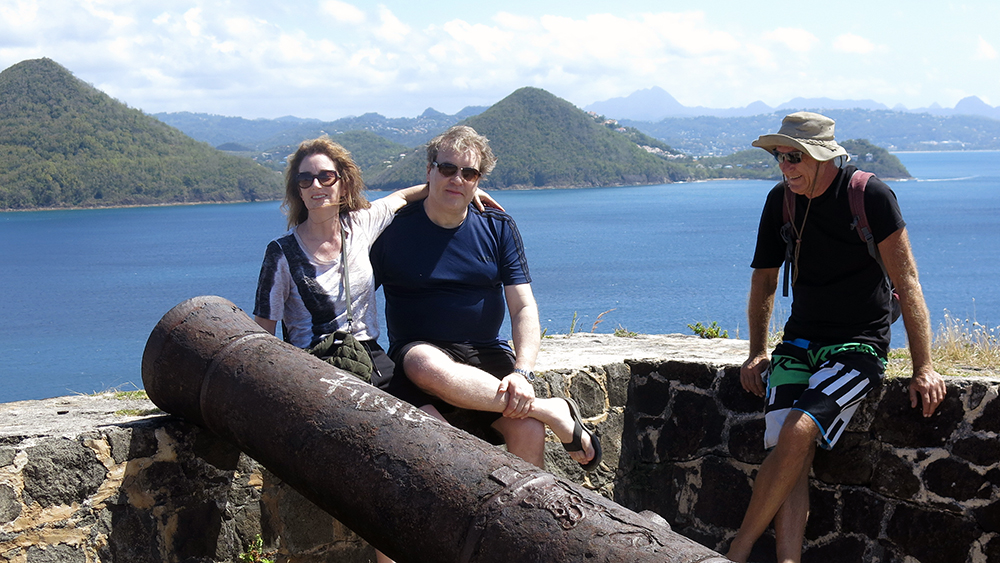
A couple of days later our friends Lisa and Michael flew in from Miami to spend a few days with us. They stayed in a hotel in Castries but we met up each day to explore the island. The first day we visited Rodney Bay and Pigeon Island. In the late 1550s the French pirate François le Clerc set up a camp on the island and established the first European settlement. We had lunch in the small restaurant there named Jambe du Bois to commemorate his nickname, due to his wooden leg. We walked around the ruins of Fort Rodney, a British fort used throughout the Napoleonic Wars to monitor French activity on Martinique.
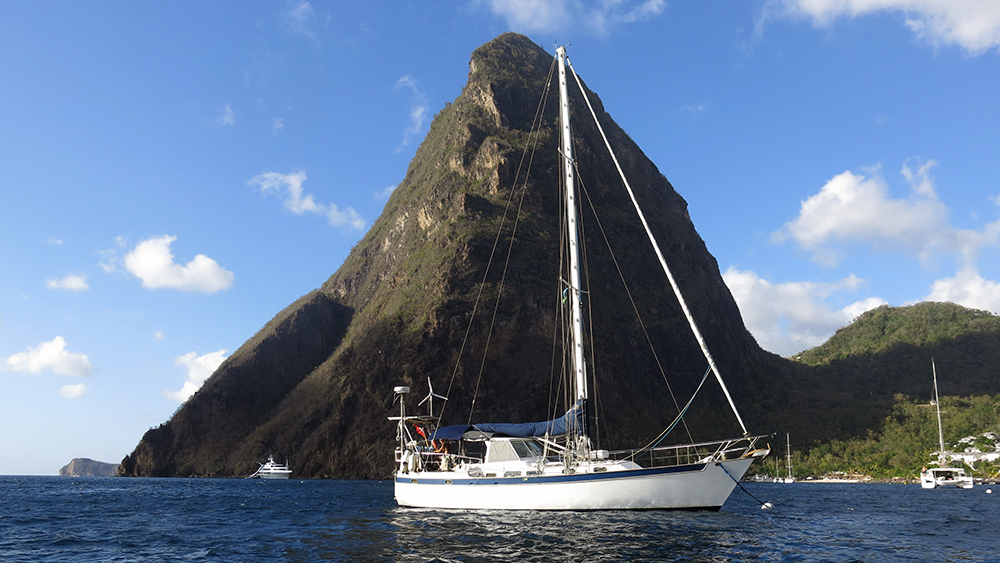
The next day we took a tour of St. Lucia. Like Grenada the island is verdant and mountainous with hardly a flat bit of land big enough to build an airport on. The road on the west coast winds through jungle and banana plantations (their biggest export), dropping down into small bays with a small crescent of white sand beach and sometimes a fishing village. We finally arrived in Soufriere and had lunch in a restaurant with a fabulous view of the Pitons – two precipitous volcanic plugs which rise more than 700m from the ocean.
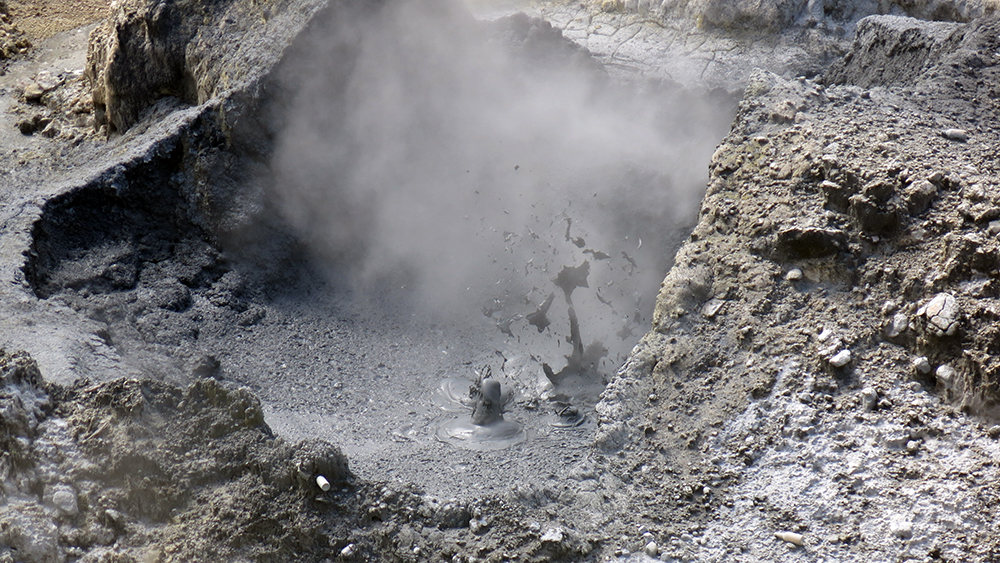
After lunch we visited the “world’s only drive-in” volcano and inspected the steaming hot springs and fumeroles in the caldera then got plastered with dark sludge in the mud baths. A quick visit to the Project Chocolate was a bit disappointing – the factory was not open for visitors and the cheapest chocolate bar in the shop was $10!
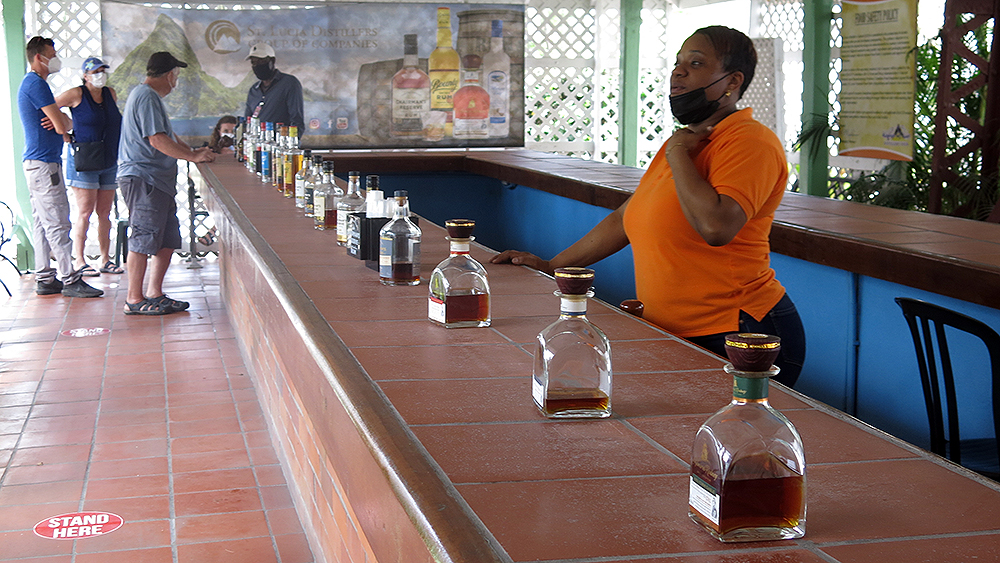
Lisa and Michael sailed with us from Castries to the beautiful Marigot Bay. French ships used the narrow, steep-sided bay to hide from the British, anchoring behind the sandspit which divides the bay and tying palm fronds to their masts to look like coconut trees. In 1967 the original Dr. Doolittle film with Rex Harrison was filmed in the bay. It is a lovely anchorage but the wake from high speed tourist boats zooming through made it uncomfortable during the day.
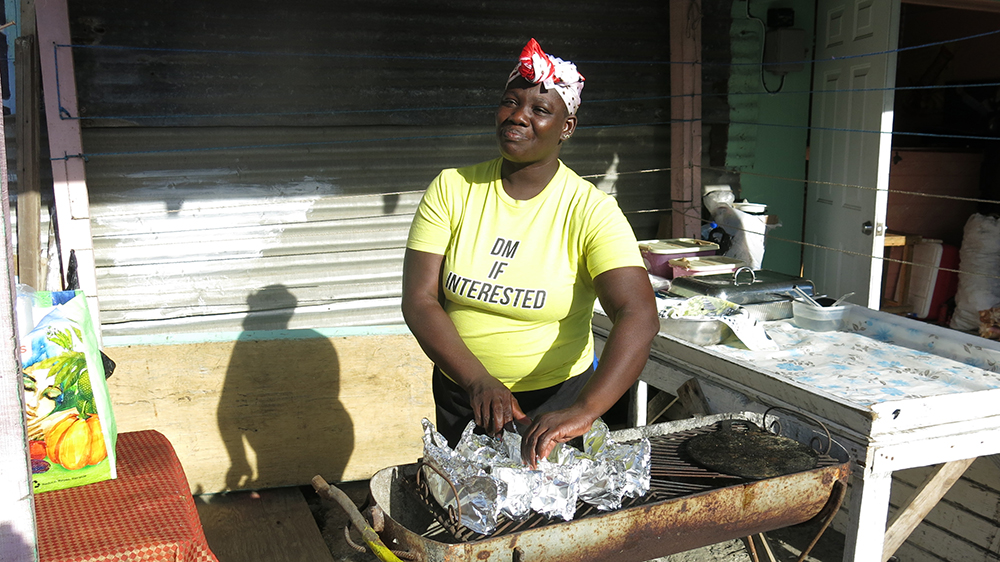
After Lisa and Michael left we moved down to Anse la Raye where we were the only yacht in amongst the fishing boats in the quiet little bay. It was “Fish Friday” when barbeques are set up in the streets and various kinds of fish are grilled or poached and enjoyed with a cold Piton beer. During Covid the tradition was stopped but gradually the fish stalls are coming back and we ate delicious snapper baked with potatoes and veggies in foil. A bunch of kids came down to sit with us and tell us stories and a few of the local lads joined us for a chat. It was a lovely evening.
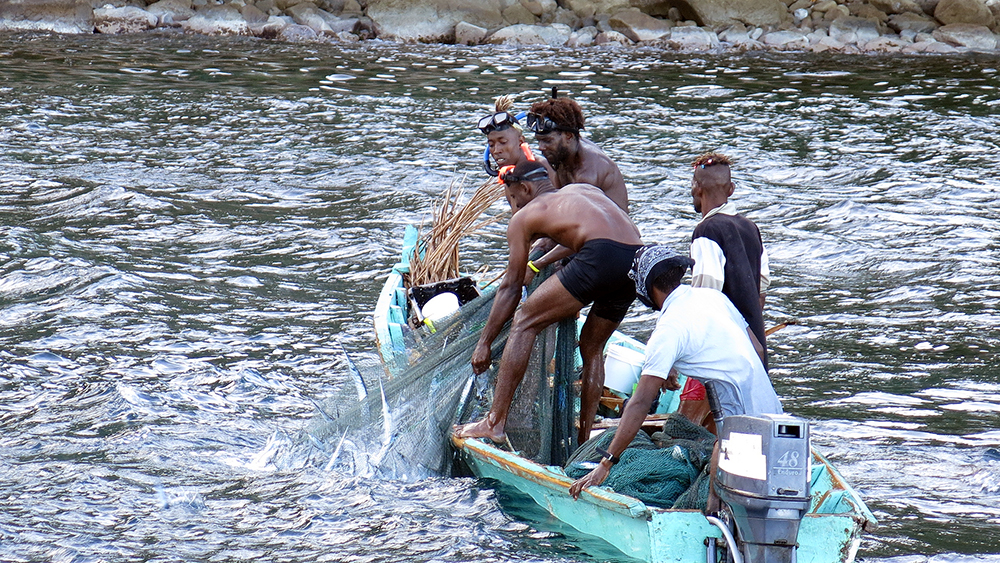
We sailed a little further down the coast to Soufriere and picked up a mooring in the bay between the Pitons, it was a remarkable sight. Snorkelling at the foot of Petit Piton was lovely; rugged rocky topography, beautiful clear water and enough fish to keep us interested. Wind from the north and strong currents from the south caused Distant Drummer to waltz around the mooring, it was strange having the wind blowing into the the cockpit.
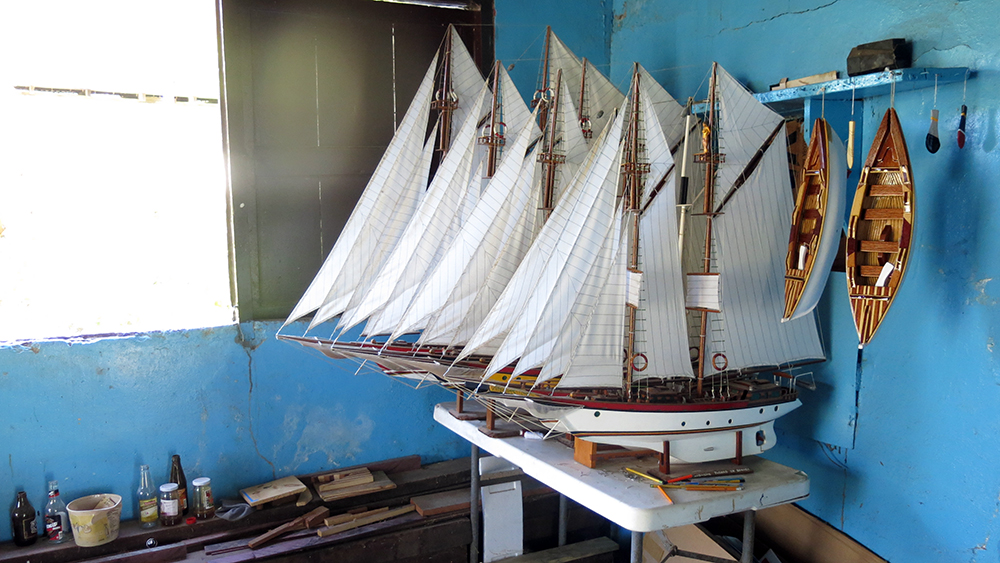
Our last port of call in St .Lucia was Rodney Bay – the most popular destiantion for cruising yachts on the island. There we plenty of tourists and shops and restaurants and bars. We picked up a few provisions and a French flag, checked out with Customs and Immigration and set sail for Martinique.
A bientot!
Suzy and Neil
